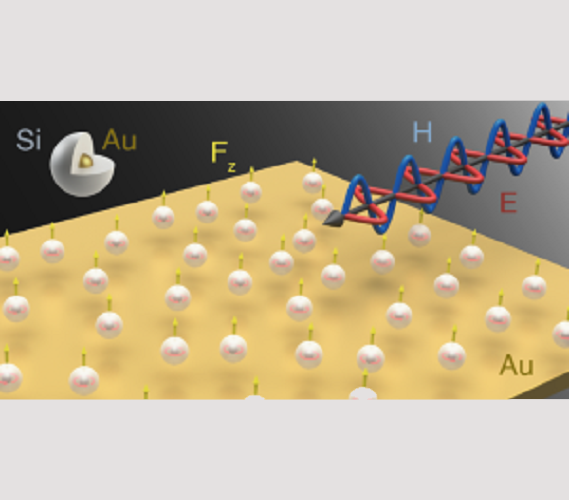LCN Researchers from the Photonics and Nanotechnology group at King’s have reported an exciting new levitation phenomenon that involves shining light on nanoparticles which are made from a non-magnetic material. The light resonates with the nanoparticles to produce a magnetic property, in a process known as optical magnetism. When placed near a metallic surface, these resonating particles behave like nanoscale oscillating magnets which are naturally repelled by their own reflected fields from the surface, leading to levitation. This kind of levitation is highly-scalable and their new approach increases the feasibility for real-world applications over previous methods.
Lead author Jack Kingsley-Smith said:“Controlling the movement and position of small objects precisely may seem like a simple problem at first but it’s a problem that many fields of research still face and encounter issues with. The modern way to approach this is to use light, since it’s contactless, non-invasive and flexible. By shining light on these particles, they become temporarily magnetic and when placed near a metallic surface, they naturally levitate. This type of levitation was previously only possible with exotic materials. By utilising optical magnetism, we have enabled the use of common materials and thus greatly increased the real-world feasibility of this phenomenon.”
The research published in Nano Letters has the potential for wide-ranging applications in nanomechanical devices including nano-conveyer belts.
The team has previously published work to engineer a special surface to repel the particles, but in this work the design is focused on the levitating particle using high index dielectric spheres or core-shell particles. This new approach allows for any metal surface to be used which would reduce the cost of manufacturing considerably.
“The optical levitation of particles from a surface could enable applications in future nanofactories, such as nano-conveyor belts, to levitate and move nanoparticles across a surface. Conventional optical-tweezer-based optical forces need to focus on levitating particles one at a time. The advantage of our dipolar repulsion approach is that it acts on all illuminated particles simultaneously. Therefore, using a wide-area illuminating beam, this can be massively-parallel, with thousands or millions of particles simultaneously levitating.”
Dr Francisco Rodríguez Fortuño, Principal Investigator
This work was supported by the European Research Council Starting Grant –PSINFONI.




